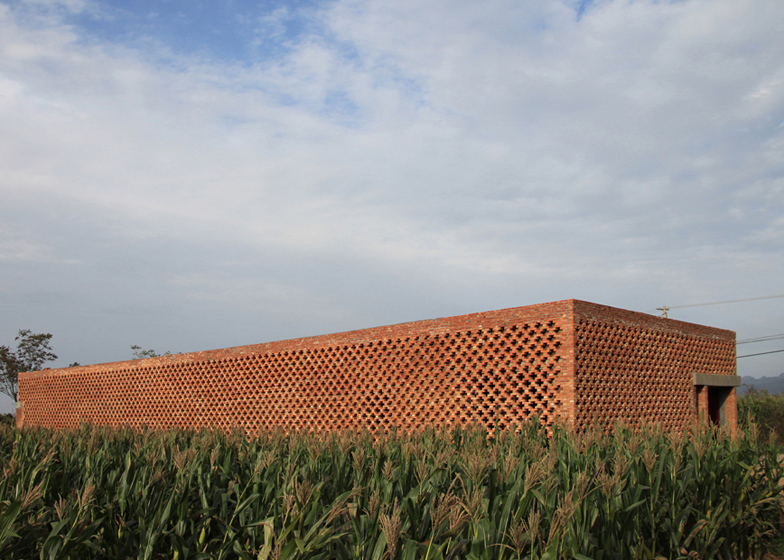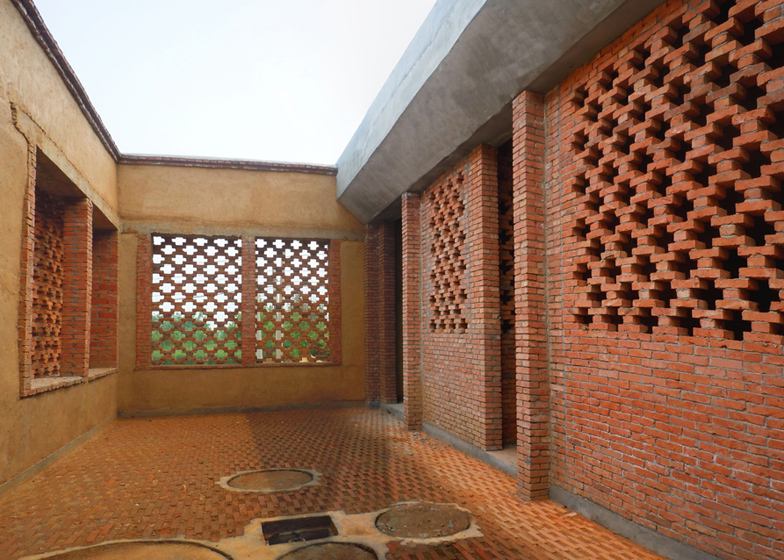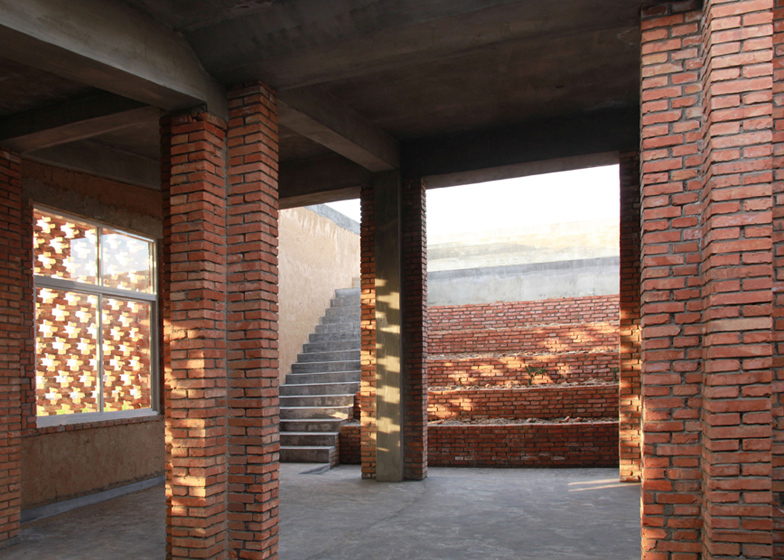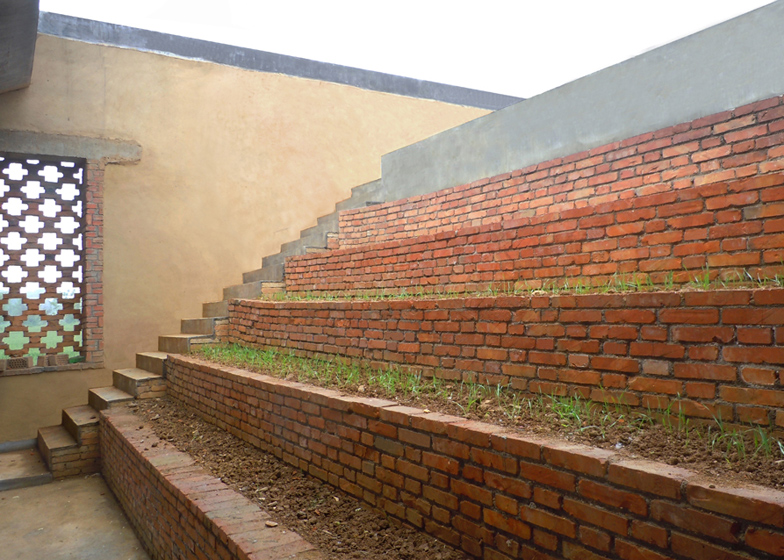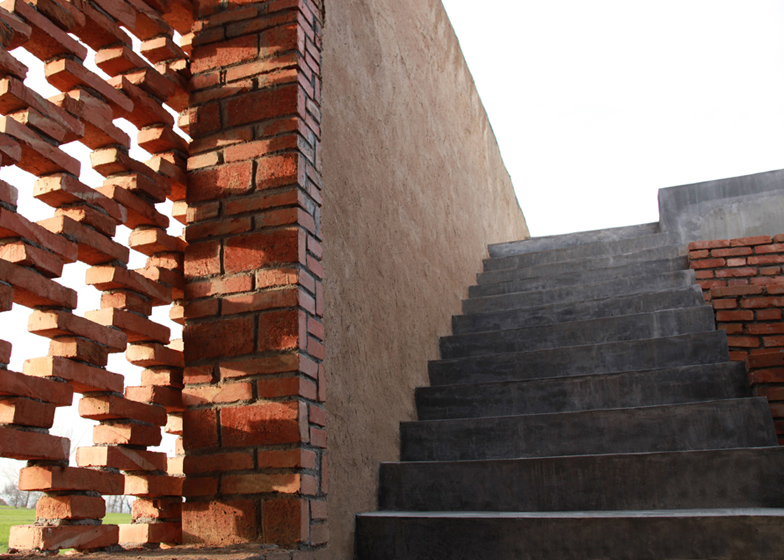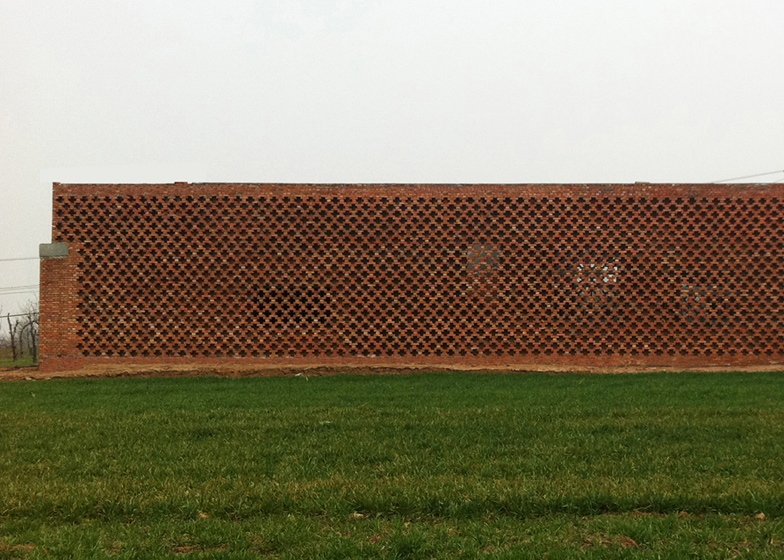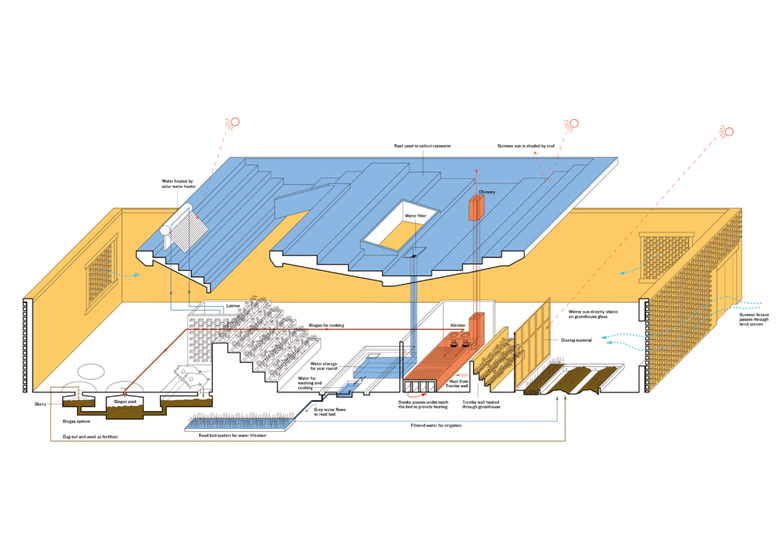Architect John Lin has adapted the traditional style of a rural Chinese courtyard residence to create a village house that is entirely self-sufficient (+ slideshow).
Lin, who is an architecture professor at the University of Hong Kong, designed the house in Shijia Village, north-eastern China, as a model that would encourage village residents to be less dependent on outside goods and services.
A number of courtyards are contained behind the walls of the house, accommodating a pig pen and an underground biogas boiler that generates energy from the animal waste.
Wide staircases provide areas for planting crops, which can be fertilised using leftover slurry from the boiler and dried on the roof of the house.
During the rainy season the roof is also used to collect water, which filters down into a large container and can be stored throughout the year.
Just like a traditional village residence, the building has insulating mud walls, but also features a concrete frame to increase earthquake-resistance and a latticed brick exterior that provides both shade and natural ventilation.
House For All Seasons recently won first prize in the AR House 2012 awards. Last year's winner was a house covered in rubber and the winning project in 2010 was a house with shutters weighted by concrete balls.
Here's a press release from the Architectural Review:
Constructing China: Award-winning Architects Lead the Way
The Architectural Review presents its prestigious 2012 House Award to Chinese architect John Lin, joining an international community of critics who are recognising the excellence and innovation of contemporary architects working in China today.
This is the year of the Chinese architect. The Architectural Review has presented its 2012 House Award to John Lin, a Hong Kong-based architect whose innovative work takes him into the interstices of the extraordinary transformation underway in China’s cities, towns and rural areas.
Lin’s winning project is an updated version of the vernacular mud brick courtyard house that populates China’s vast rural areas.
His design for a modern prototype of this traditional locus of rural life, increasingly at risk, brings together both old and new, incorporating concrete technology with original mud brick construction.
Central to the design is the idea of self-sufficiency. The multifunctional roof provides a space for drying food, steps for seating and a means to collect water in the rainy season.
Four courtyards accommodate, among many household activities, a place for keeping pigs and an underground biogas system that produces energy for cooking.
The entire structure is surrounded by a brick screen wall that protects the mud walls and shades the interior.
According to Lin, his contemporary update of the traditional Chinese rural house will help “villages [reduce] their dependency on outside goods and services”.
Click above for larger image
By “evolving” rather than “preserving”, he says, “we’re actually working to prevent a rural ghetto.”
Click above for larger image
Catherine Slessor, awards jury chair, notes that “Lin’s new twist on an old format points the way to responding to China’s unprecedented housing challenges in original ways, by retaining the best of the past while embracing a rapidly changing future.”
Click above for larger image
Title: A House For All Seasons
Location: Shijia Village, Shaanxi Province, China
Designer: John Lin / The University of Hong Kong
Commisioning donor: Luke Him Sau Charitable Trust
Project collaborators:
Shaanxi Province Women’s Federation
Qiaonan Town Government
Shijia Village Government
The University of Hong Kong
Credits:
Huang Zhiyun
Kwan Kwok Ying
Maggie Ma
Jane Zhang
Qian Kun
Katja Lam
Li Bin
Project details:
Date: March 2012
Size: 380m2
Cost: 53,400 USD
Unit Cost: 140 USD/m2

